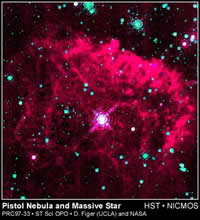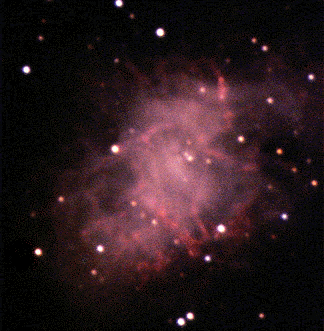Helioseismology

Helioseismology studies the waves that travel through the Sun. The waves (vibrations) are increased by the temperature of the Sun and the deep motions inside the Sun.
Scientists can measure these waves at the Sun's surface. Since the waves are made deep inside the Sun, scientists use these waves to understand the Sun's inside. That is why helioseismology is called a diagnostic.
We can see these waves in other stars too.
60 foot tower at Mt. Wilson Observatory
where helioseismology work began in the 1960's
Click on image for full size (26K JPEG)
Image courtesy of of University of Southern
California, 60 Foot Solar Tower at Mt. Wilson Observatory.
 A computer-generated image of a
wave moving through the interior of the Sun.
A computer-generated image of a
wave moving through the interior of the Sun.
 Sounds of the Stars
Sounds of the Stars
 The Sounds of the Sun brought to you by the BiSON network...
The Sounds of the Sun brought to you by the BiSON network...
 Movie: Journey Beneath a Sunspot
Movie: Journey Beneath a Sunspot
You might also be interested in:

George Hale was an American astronomer born in 1868. Even as a child, Hale was interested in the stars. His father even built him his own observatory in the backyard. An observatory is a place where telescopes
...more
The Sun releases energy. This energy is made in the center of the Sun. But we can't see past the surface of the Sun. So how do we know how this energy is made? Well, scientists use diagnostics to figure
...more
The Sun acts like it has a big magnet in the middle of it. We call this the Sun's magnetic field. The Sun's magnetic field has a fancier name, the Interplanetary Magnetic Field (IMF). This just means that
...more
In the basic Hydrogen fusion cycle, four Hydrogen nuclei come together to make a Helium nucleus. This is the simple version of the story. There are actually electrons, neutrinos and photons involved in
...more
Fusion in the core of stars is reached when the density and temperature are high enough. There are different fusion cycles that happen in different phases of the life of a star. These different cycles
...more
Neutron capture can occur when a neutron approaches a nucleus close enough for nuclear forces to be effective. The neutron is captured and forms a heavier isotope of the capturing element. When the new
...more
A Supernova is a very massive star that explodes at the end of its life. The supernova is where the heavy elements (heavier than iron) are made.
...more
The center of an atom is called the nucleus. Nuclei is the plural of nucleus. When two atoms come together, and their nuclei combine, you have fusion. Fusion releases energy. By using Einstein's famous
...more

 A computer-generated image of a
wave moving through the interior of the Sun.
A computer-generated image of a
wave moving through the interior of the Sun.
 The Sounds of the Sun brought to you by the BiSON network...
The Sounds of the Sun brought to you by the BiSON network... Movie: Journey Beneath a Sunspot
Movie: Journey Beneath a Sunspot













